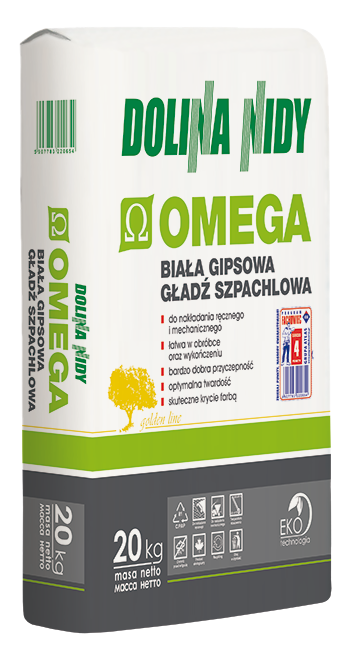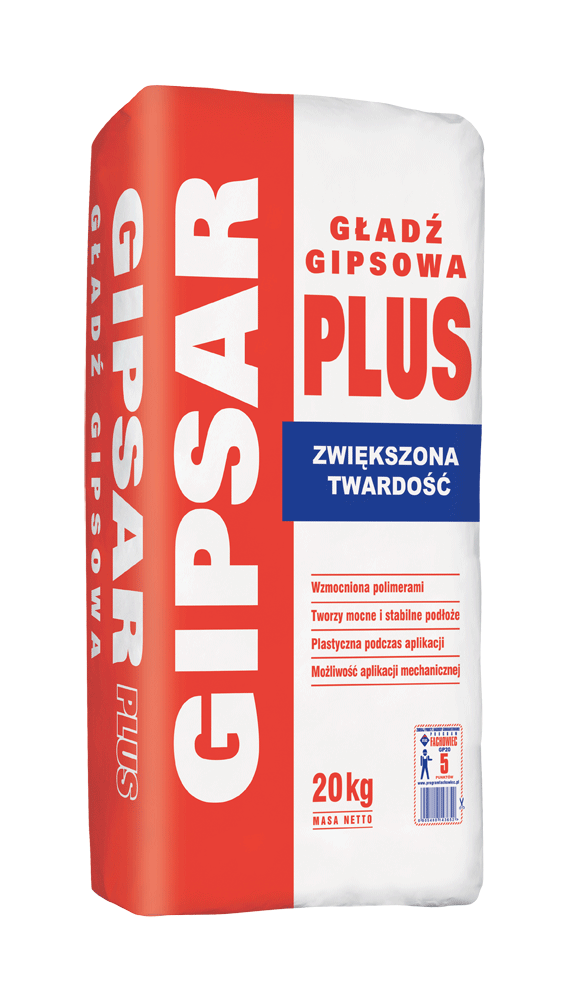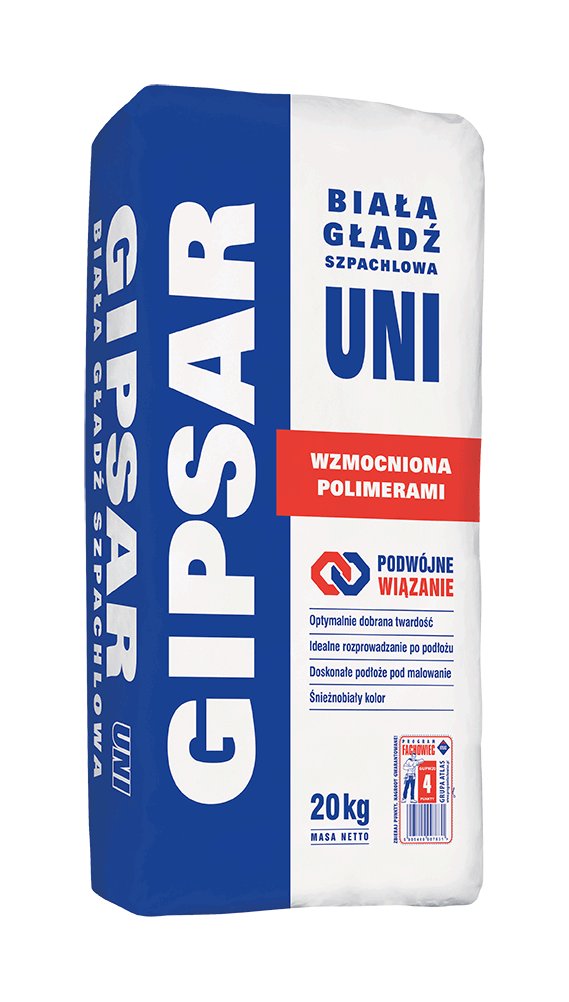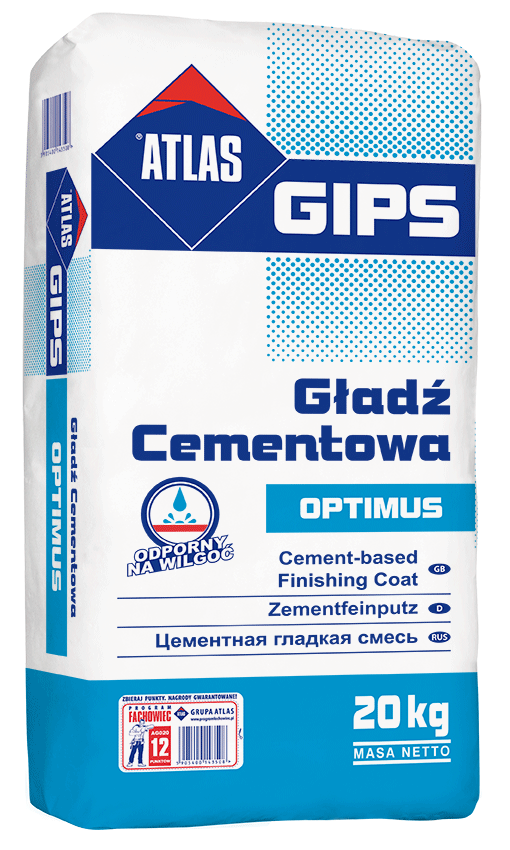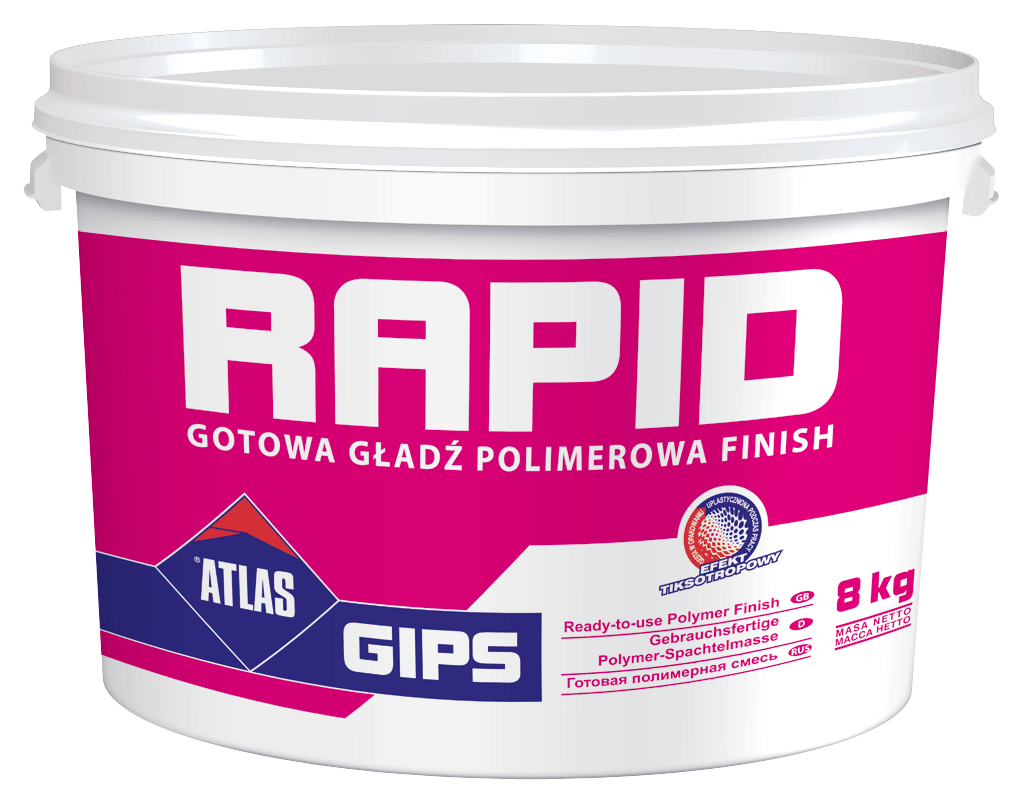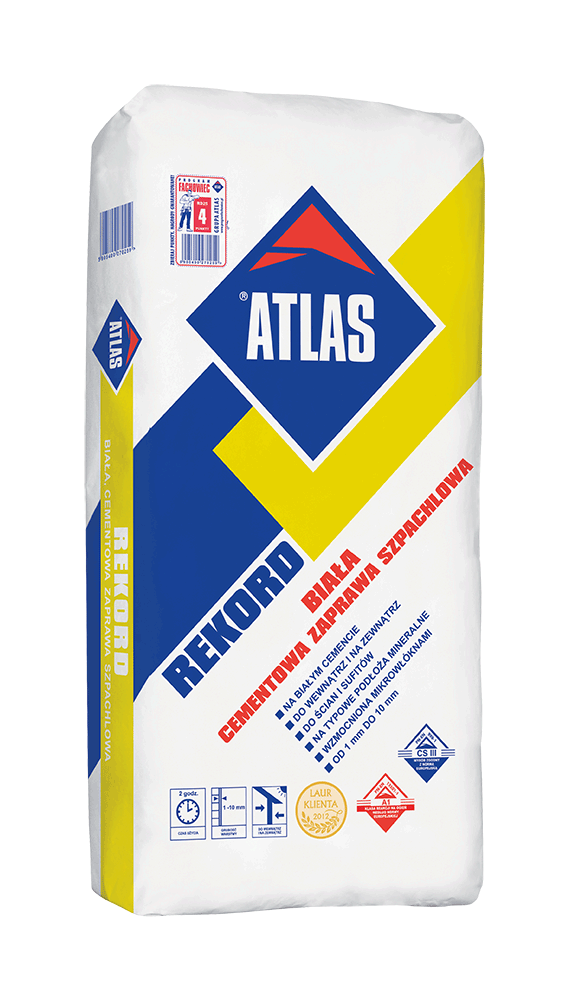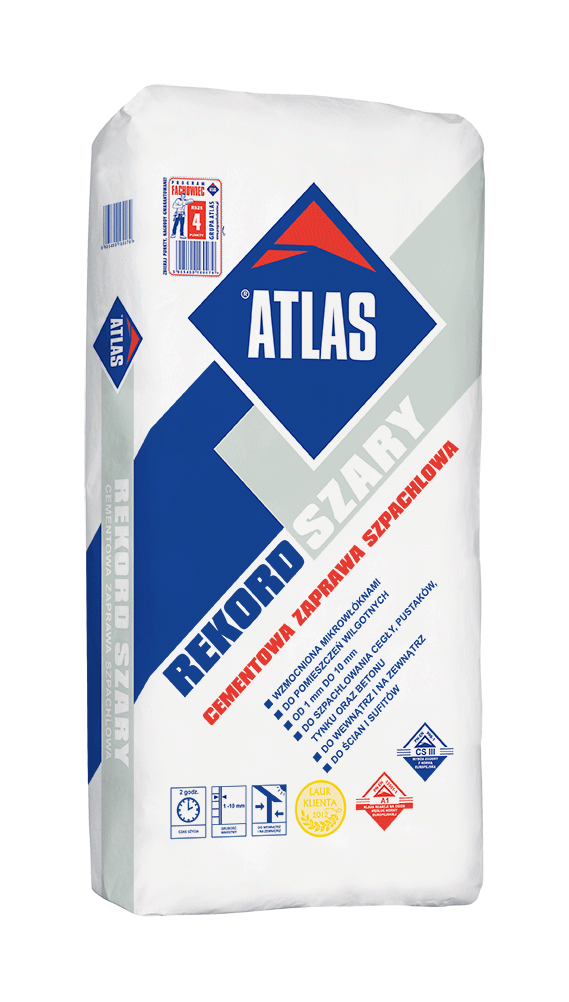- Products
- Systems
- Tools & Services
News
Finishing coats for indoor and outdoor use
The materials for application of the finishing coats should be based on very fine aggregate and provide sufficient strength in order to allow processing the surface both at dry and wet state. Such materials are based on gypsum, limestone, cement and polymer binders. Here is the overview of finishes types which are available on the market.
CEMENT FINISHES
MOST IMPORTANT FEATURES:
Advantages:
+ Cement finishes can be manufactured either on the basis of grey Portland cement (ATLAS Rekord Grey) or white Portland cement (ATLAS Rekord or ATLAS Gips Optimus) with addition of limestone, quartz aggregate, dolomite powder and modifying additives.
+ Cement – based finishes are general-use products. Unlike gypsum and polymer finishes one can apply cement finishes onto walls both outdoors and indoors, including the walls in the, so-called wet compartments. This is possible due to the presence of cement being the basic binder in the mix. And cement is water resistant and frost-resistant.
+ They can be used in a wide range of thickness, from 1 mm up to 10 mm for a single coat. Therefore, they can be basically used as a plaster top coat, i.e. as an independent plaster applied with a thin coat over the entire surface. They are used to form final planes during walls and ceilings renovation or as a top finish improving the quality of previously executed cement or cement-lime plasters.
+ Due to the assigned application range (which is the top coat) they contain very fine aggregate which enables to form very even and smooth surface. Nevertheless, cement finishes still consist aggregate thicker than gypsum and especially polymer ones.
+ Thanks to the cement binder the mechanical strength of the mortar is significantly higher. The coating is resistant to mechanical damage resulting from normal building operation.
Disadvanteges:
– Due to the binder type the finish is hard and more time-consuming in polishing.
– One must pay special attention to curing and avoid too quick drying of the finish.
Cement finishes bind due to hydration – a chemical reaction which combines cement components with water. The mortar hardens and set with gradual increase of its strength. Therefore, in case of cement finishes it is essential to keep the manufacturer’s recommendations on the mixing ratio of the dry mix and water. Inappropriate amount of water can cause excessive contraction or decrease strength properties of the hardened finish.
Technical specification for cement and limestone finishes is EN 998-1:2010 standard “Specification for mortar for masonry – Part 1: Plastering mortar”.
GYPSUM FINISHES
MOST IMPORTANT FEATURES:
Advantages:
+ Gypsum finishes are manufactured as dry mixes of binders, fillers and chemical additives which primarily regulate the setting time and the working parameters of the gypsum slurry. The recipes of gypsum finishes can contain the binder in the form of:
– building gypsum,
– anhydrite.
+ Manufacturers use highly pure milled gypsum of very fine aggregate to produce the gypsum finishes. The content of binder is from 30 up to 60% of total weight of the finished product and has great influence (along with the mixing water) on the strength of the hardened gypsum finish. In addition, dolomite and limestone powders are used as fillers.
+ The gypsum finishes recipes contain also aforementioned chemical additives which improve the adhesion with the substrate and the mass workability. In addition, they delay the bonding process (inhibitors).
+ The surface of the gypsum finish can be processed not only at dry state through polishing, but sometimes also at wet state. Thanks to the processing at wet state, one can avoid time-consuming polishing and thus accelerate the work progress. It is significant especially during the renovations. The coat processing consists in application of the successive layers on the previous ones which are already set but still moist and careful smoothing afterwards.
+ One can form outstandingly smooth surface when using the gypsum finishes.
Disadvantages:
– Gypsum binder loses strength and softens when in contact with water. Thus, gypsum-based materials cannot be used outdoors and in zones exposed to high humidity for long time, e.g. in laundries, dryers and showers.
Finishes based on gypsum bind through hydration – a chemical reaction resulting in the condensation of gypsum slurry formed by mix of dry powder and water (as a result of hydration newly formed particles form the network of crystals).
ANHYDRITE FINISHES
MOST IMPORTANT FEATURES:
Advantages:
+ Anhydrite finishes belong to the gypsum finishes, however they are manufactured on the basis of anhydrous calcium sulfate that does not contain water molecules in its structure. Anhydrite occurs in nature (it is mined inter alia in Niwnice Gypsum and Anhydrite Mine belonging to ATLAS Group) or can be obtained through appropriate gypsum calcination at temperature above 600 °C.
+ Processes of setting and hardening of anhydrite binders contained by the finishes proceed much slower in comparison to the gypsum ones. Therefore, the finishes recipes based on anhydrite need to contain additives activating the bonding process (activators) – for example semi-hydrated gypsum.
Anhydrite finishes bind due to hydration – a chemical reaction resulting in setting of the gypsum slurry based on mix of dry component and water.
Technical specification for gypsum and anhydrite finishes is EN 13279:2008 standard “Gypsum binders and gypsum plasters. Part 1. Definitions and requirements”.
POLYMER FINISHES
MOST IMPORTANT FEATURES:
Advantages:
+ Polymer finishes are manufactured on the basis of binder formed by acrylic copolymers. The filler is usually represented by dolomite powder. The binder type is of great significance here, as it influences the material technical parameters as well as the form of finishing and processing the surface.
+ They can be applied in a very thin coat; they are used as finishesproviding very smooth surface.
+ They are easy to use. They are manufactured as ready-to-use masses. They do not require mixing with water (there is no risk of dusting or formation of lumps in mass) and provide very long pot life (in contrast to gypsum slurries which are prepared of bulk materials and harden irreversibly after approx. 60-90 minutes precluding further processing). They can be gradually consumed depending on current needs.
Disadvantages:
– They cannot be used to form planes.
– It is difficult to apply them with one thick coat. In case of too quick application of the second coat, the first one may peel off and roll.
Polymer finishes bind through polymerization of the binder – a chemical reaction in result of which the compounds of low molecular weight form macromolecular compounds (polymers). The solvent needs to evaporate so as the reaction can occur. In case of polymer finishes water is the solvent. The formation of the resin net and hardening of the finish result from gradual water evaporation from the mass applied onto the substrate.
Technical specification for polymer finishes is EN 15824:2009 standard “Specifications for external renders and internal plasters based on organic binders”.
LIMESTONE FINISHES
MOST IMPORTANT FEATURES:
Advantages:
+ Top finish has high resistance against biological contamination, e.g. appearance of fungi on its surface. Therefore, limestone finishes are recommended primarily for application in rooms of high sanitary requirements, e.g. kitchens and pantries.
+ Due to slow bonding process they are convenient in use – they are characterized by low shrinkage and hence low vulnerability to possible surface cracking.
Disadvantages:
– Limestone finishes are nowadays rarely used. They are also rather difficult to be purchased at merchants and wholesalers.
Limestone finishes bind through the carbonisation – a chemical reaction consisting in the bonding of the calcium hydroxide from the mortar with the carbon dioxide from the atmosphere.
|
|
Type of finish |
|||
|
Cement finish |
Gypsum finish |
Limestone finish |
Polymer finish |
|
|
Binder |
Portland cement (white or grey) |
Building gypsum or anhydrite |
Limestone |
Acrylic copolymers |
|
Type of bonding process |
Chemical – hydration |
Chemical – hydration |
Chemical – carbonisation |
Drying – polymerization |
|
Use |
Indoors outdoors |
indoors |
indoors |
indoors |
|
Coat thickness [mm] |
1-10 |
2-3 |
2-3 |
1-3 |
|
Aggregate size |
fine |
very fine |
very fine |
very fine (powder) |
|
Type of surface processing |
at wet state/at dry state (polishing) |
at dry state (polishing) |
at wet state |
at dry state (polishing) |
|
Essential features |
High mechanical resistance. Universal use (indoors and outdoors). Difficult to polish. |
Easy to apply and process. Smooth surface. |
Resistant to biological contamination. Difficult to apply. |
Can be applied with a very thin coat. Very smooth surface. |
|
ATLAS product |
Atlas REKORD Atlas Gips OPTIMUS |
Gipsar UNI Gipsar PLUS Dolina Nidy OMEGA |
– |
Atlas Gips RAPID |
SUMMARY
Our text briefly described four types of building materials designed for wall finishing – cement, limestone, polymer and gypsum top coats (including anhydrite). We presented the most important information on the technical and functional parameters regarding respective product groups, with particular emphasis on the properties and the influence of binder on the parameters of a given finish type. It is easy to notice that each finish type has its own unique properties which should be taken into account when selecting the material for a specific application.
Current market trends show the increasing popularity of polymer finishes whose market share is growing at a rate of several percent a year.
Original text: Sebastian Czernik, ATLAS Group
English text: Piotr Marciniak, Michał Gosławski, ATLAS Group
